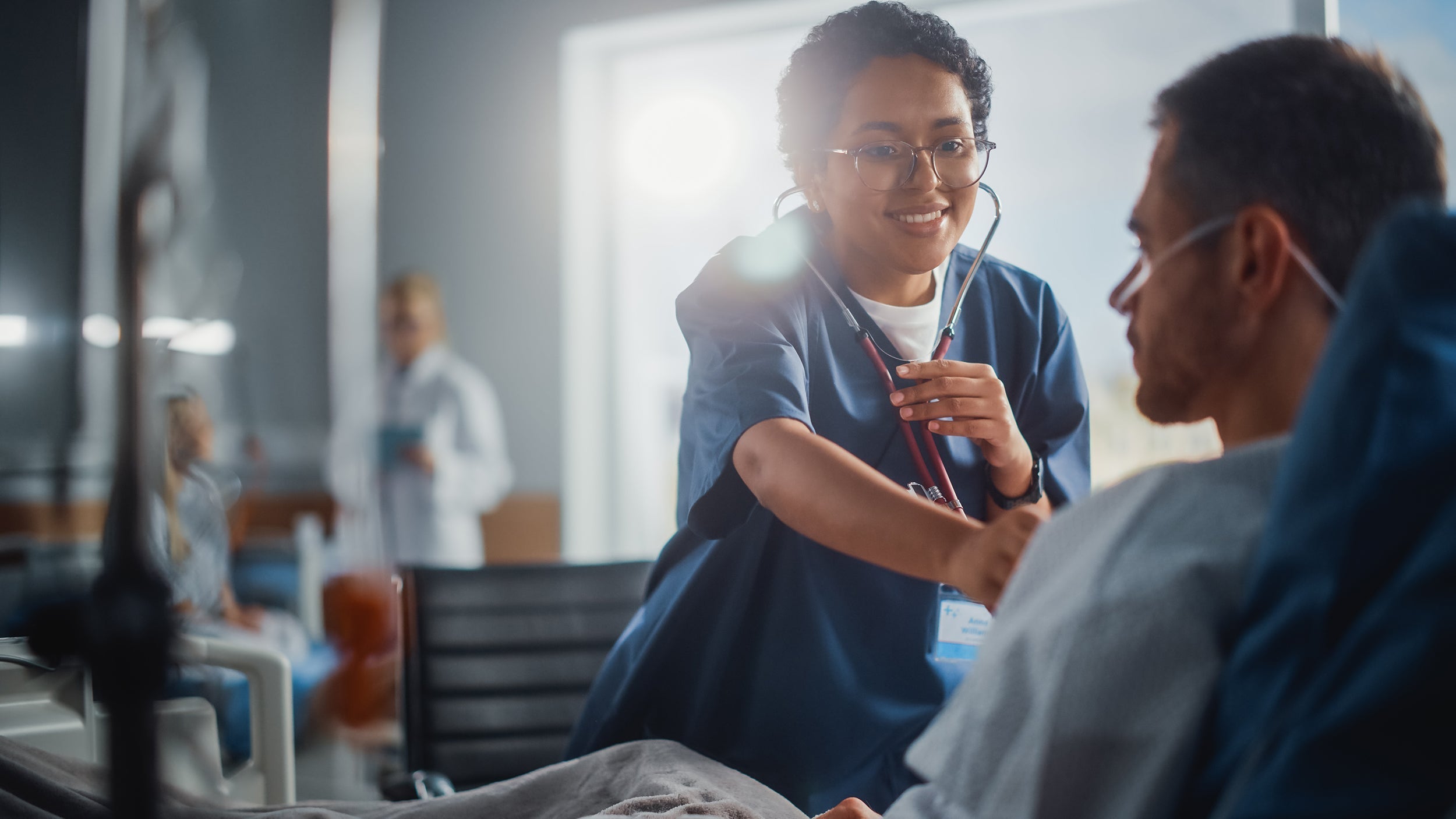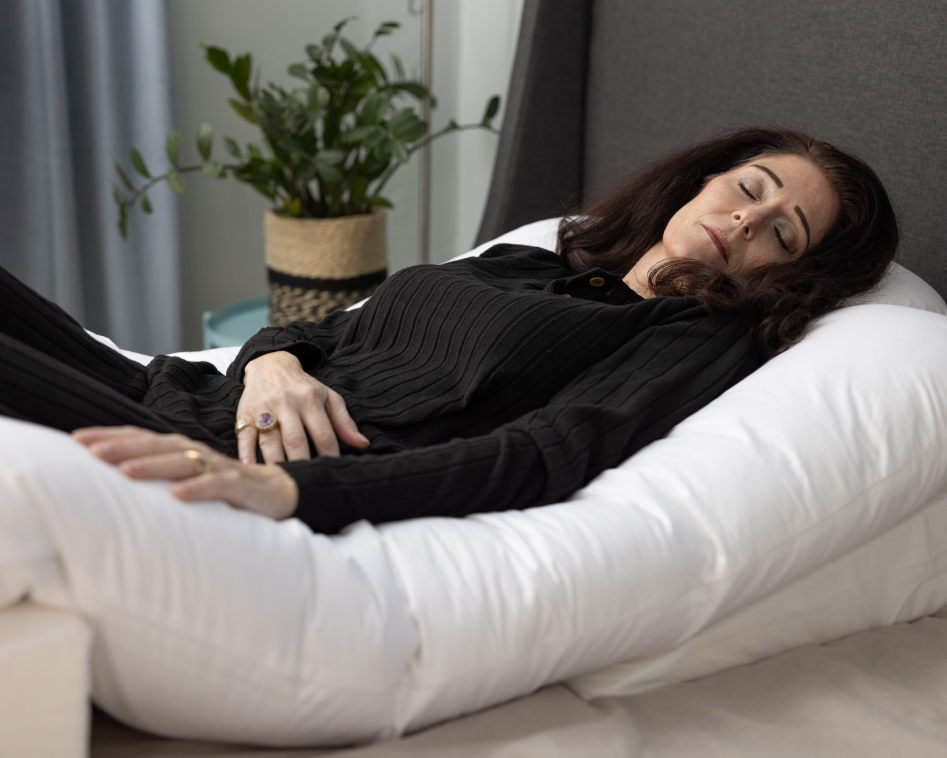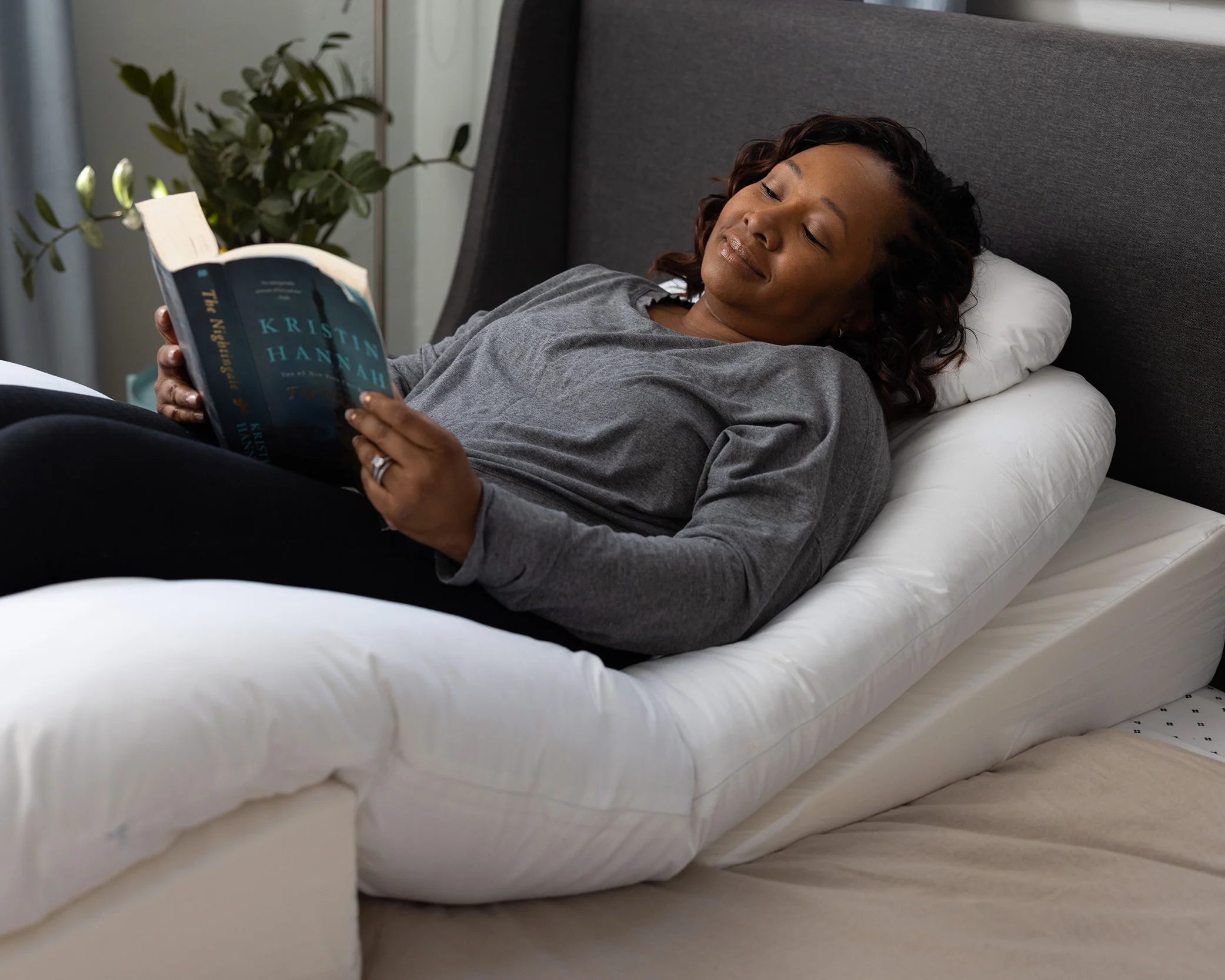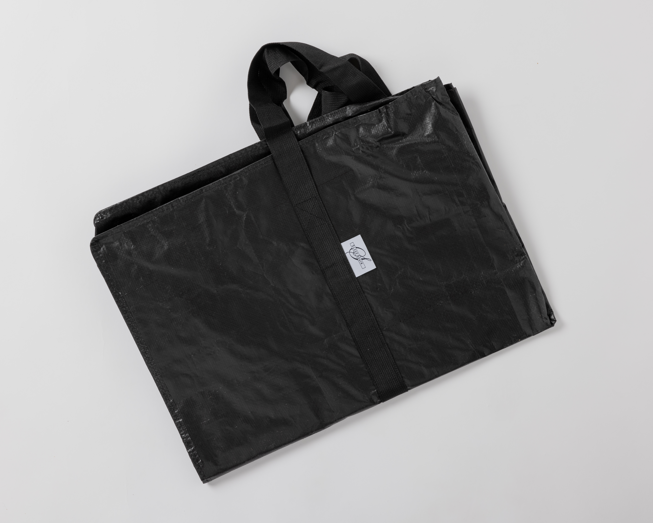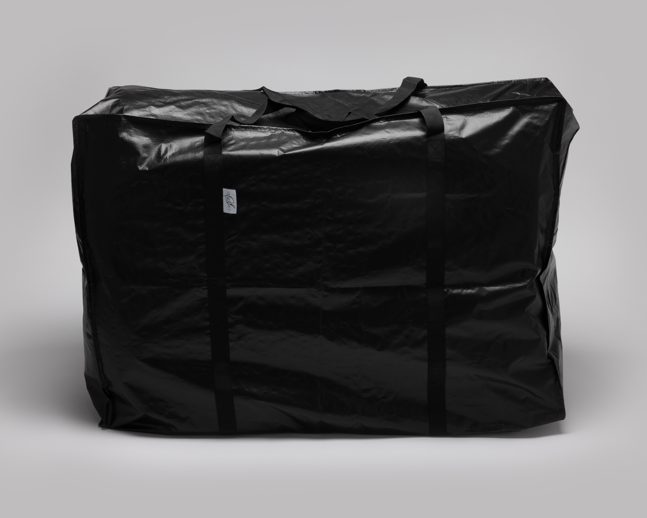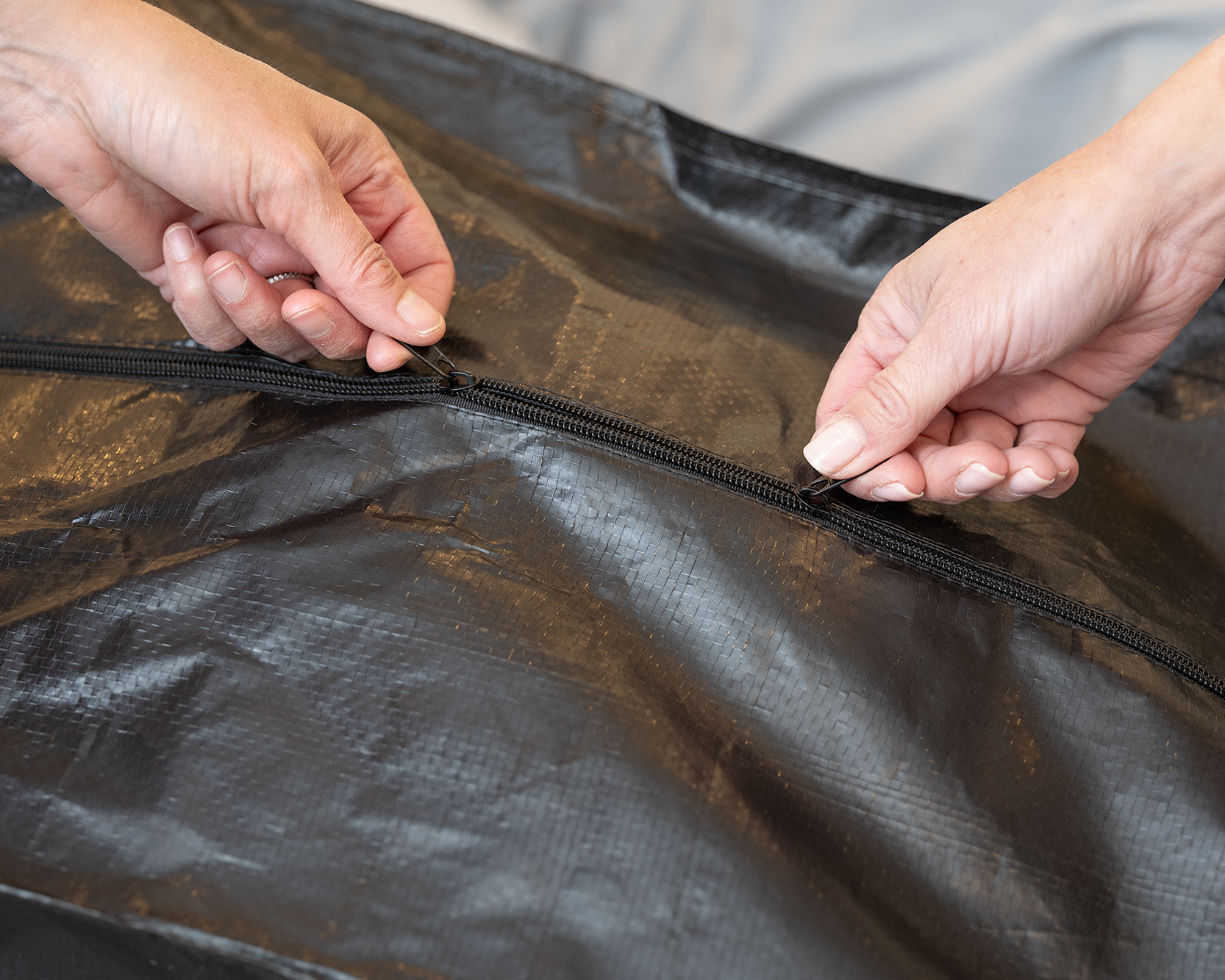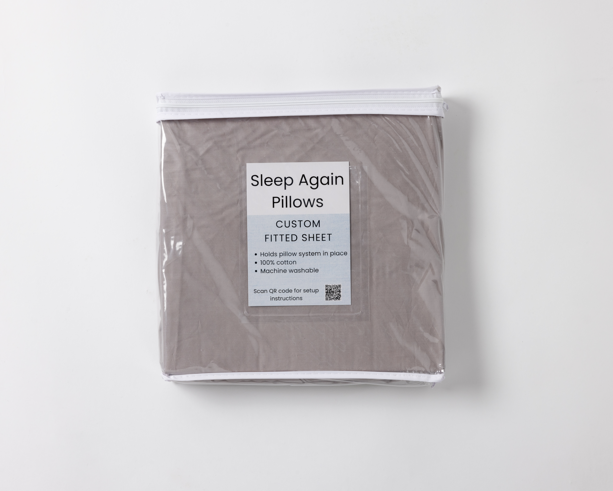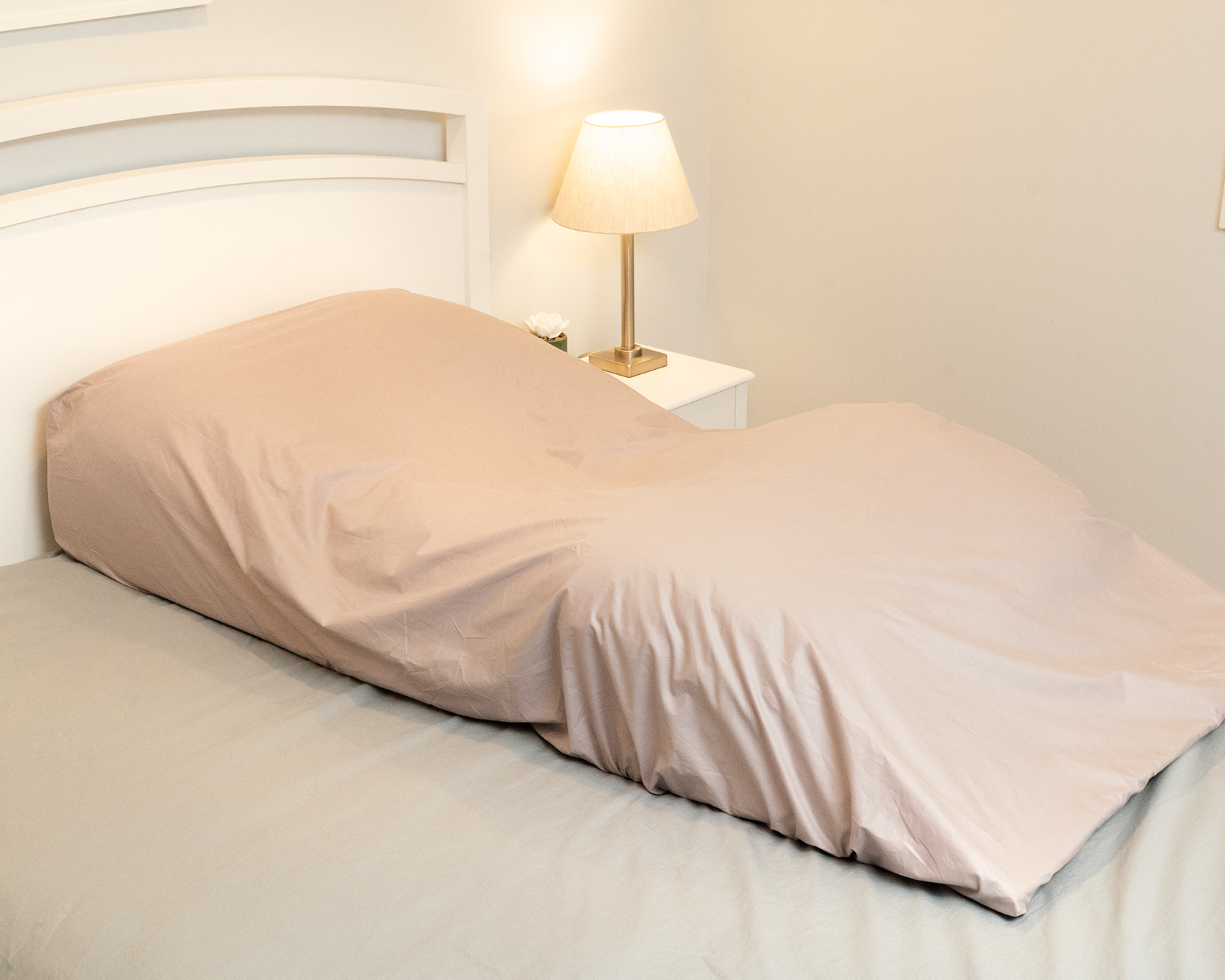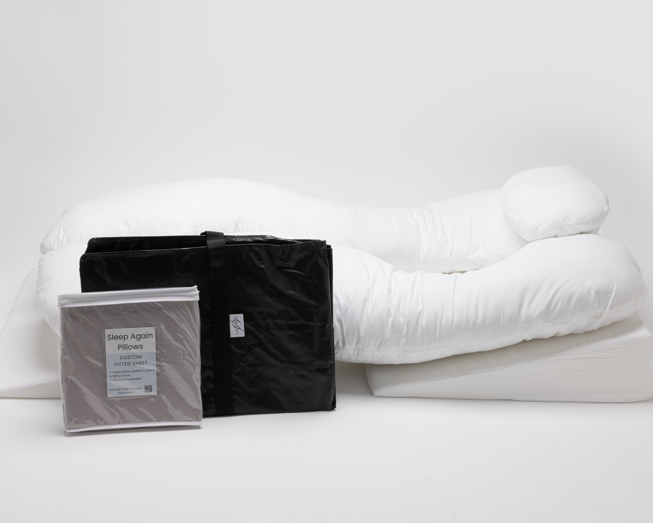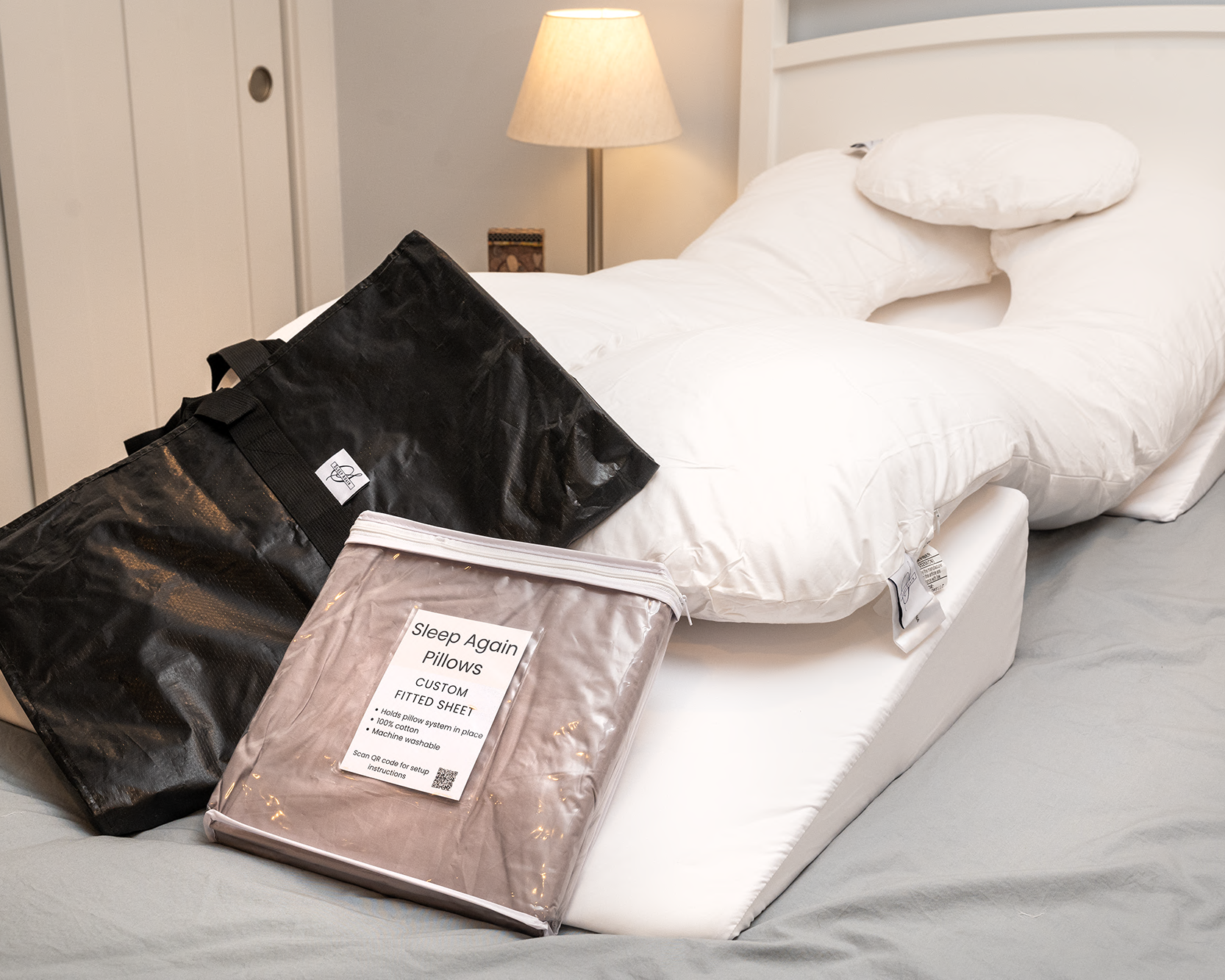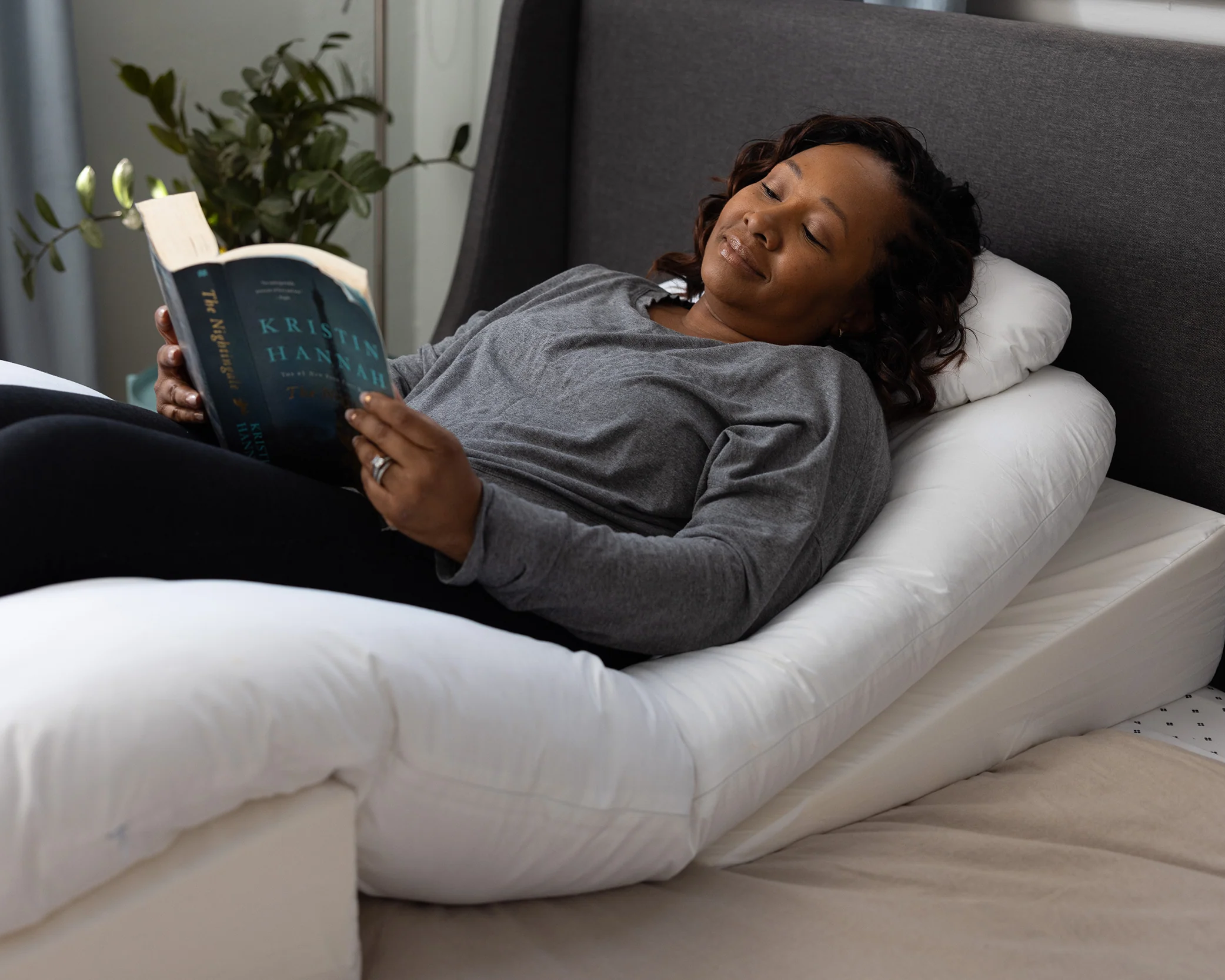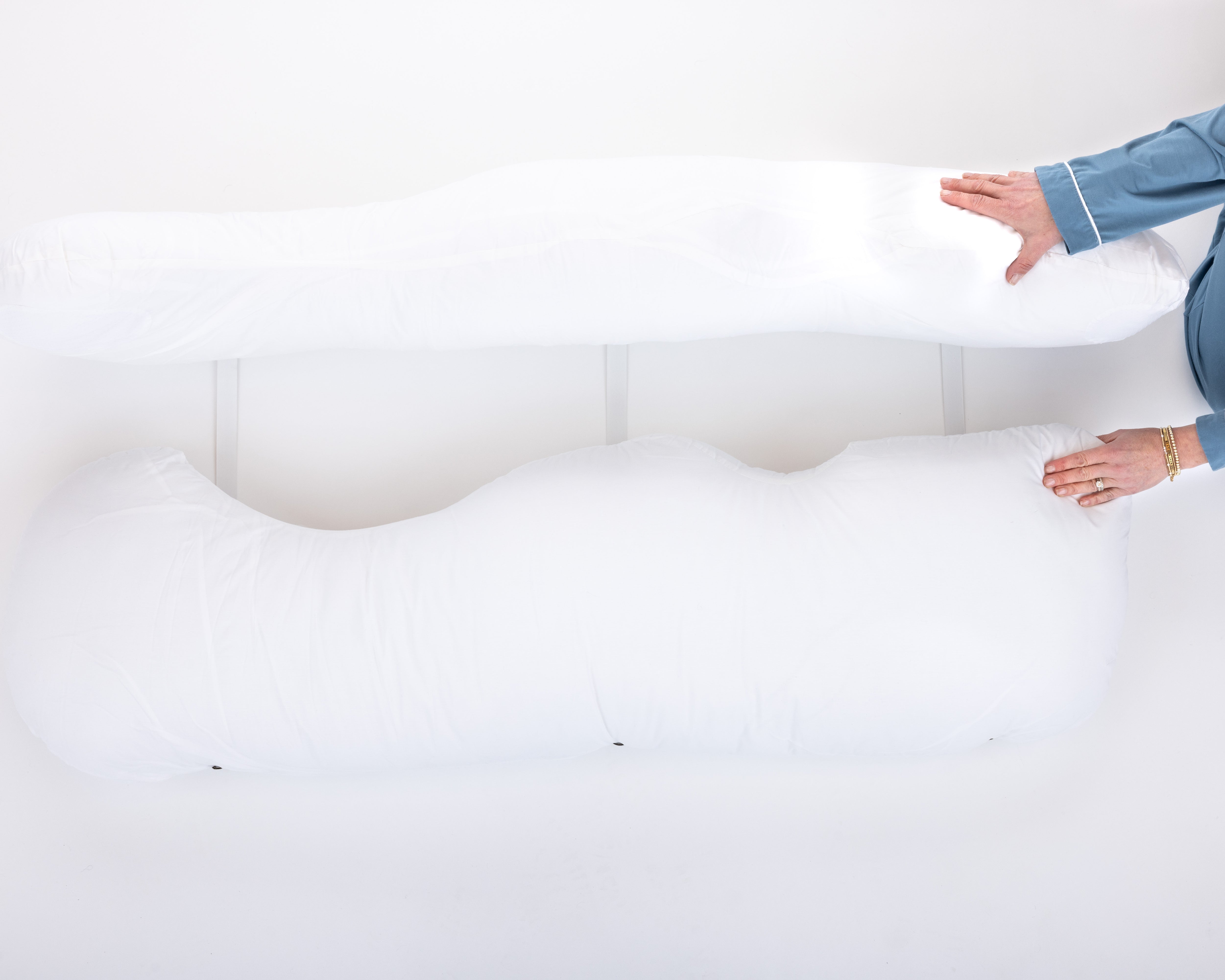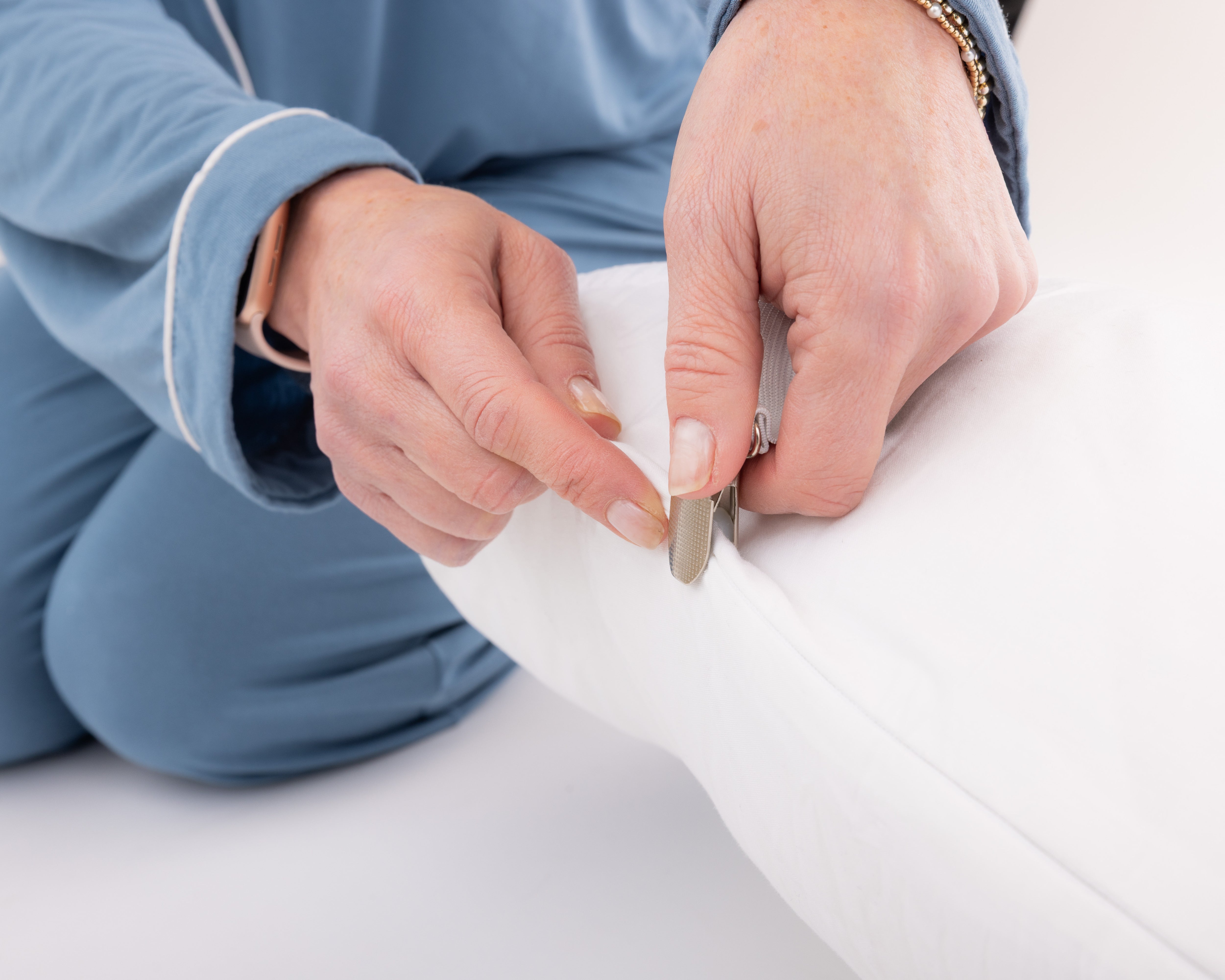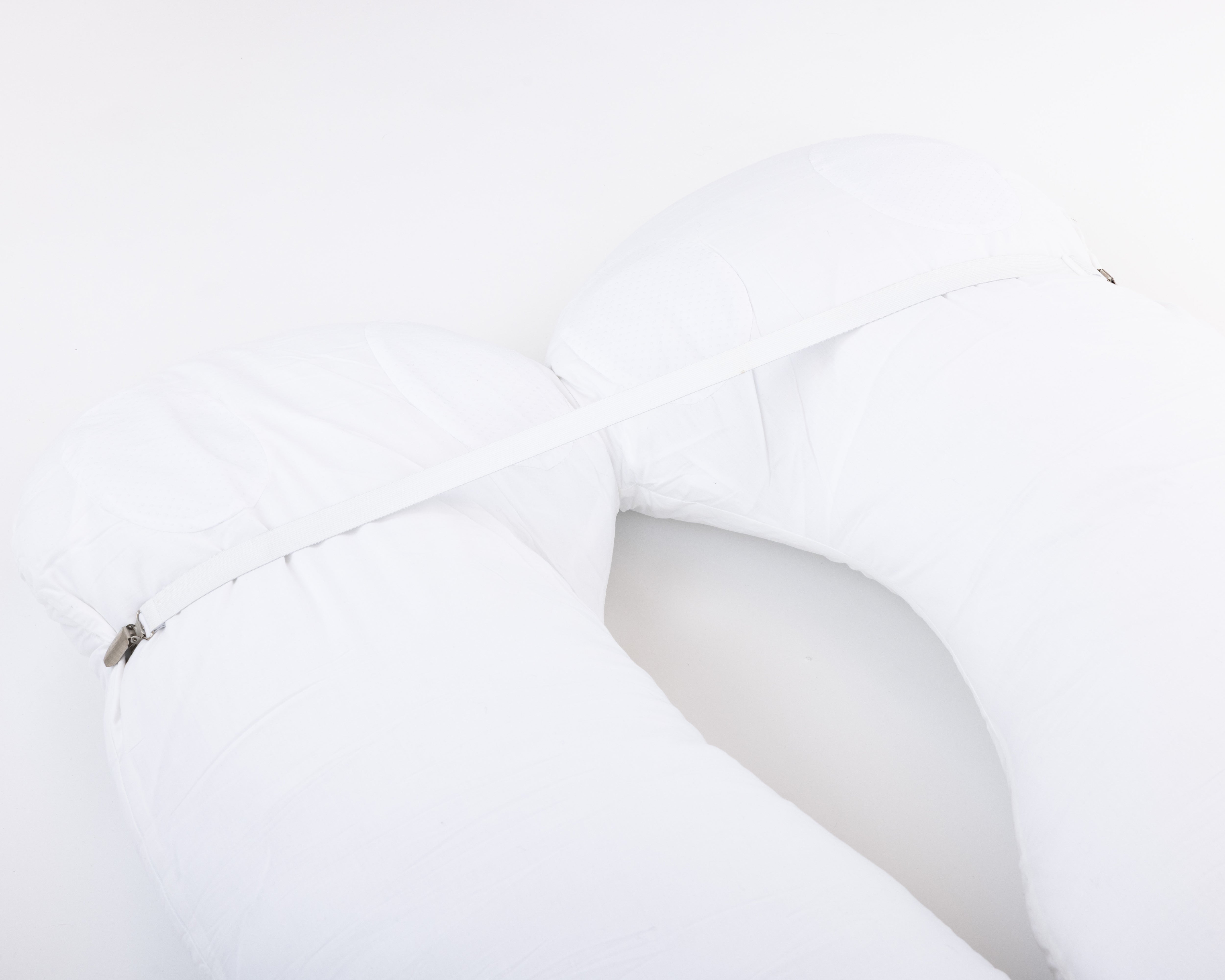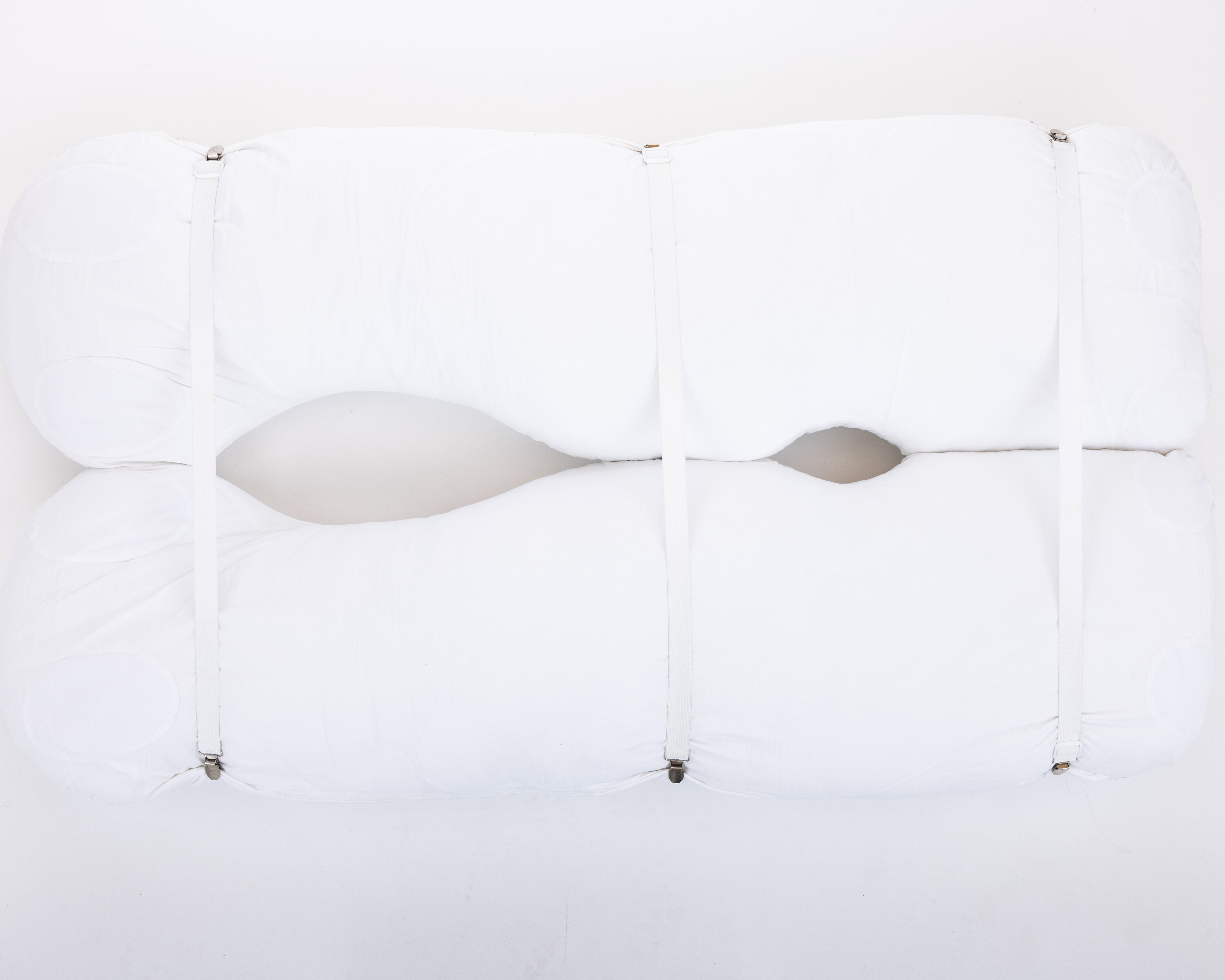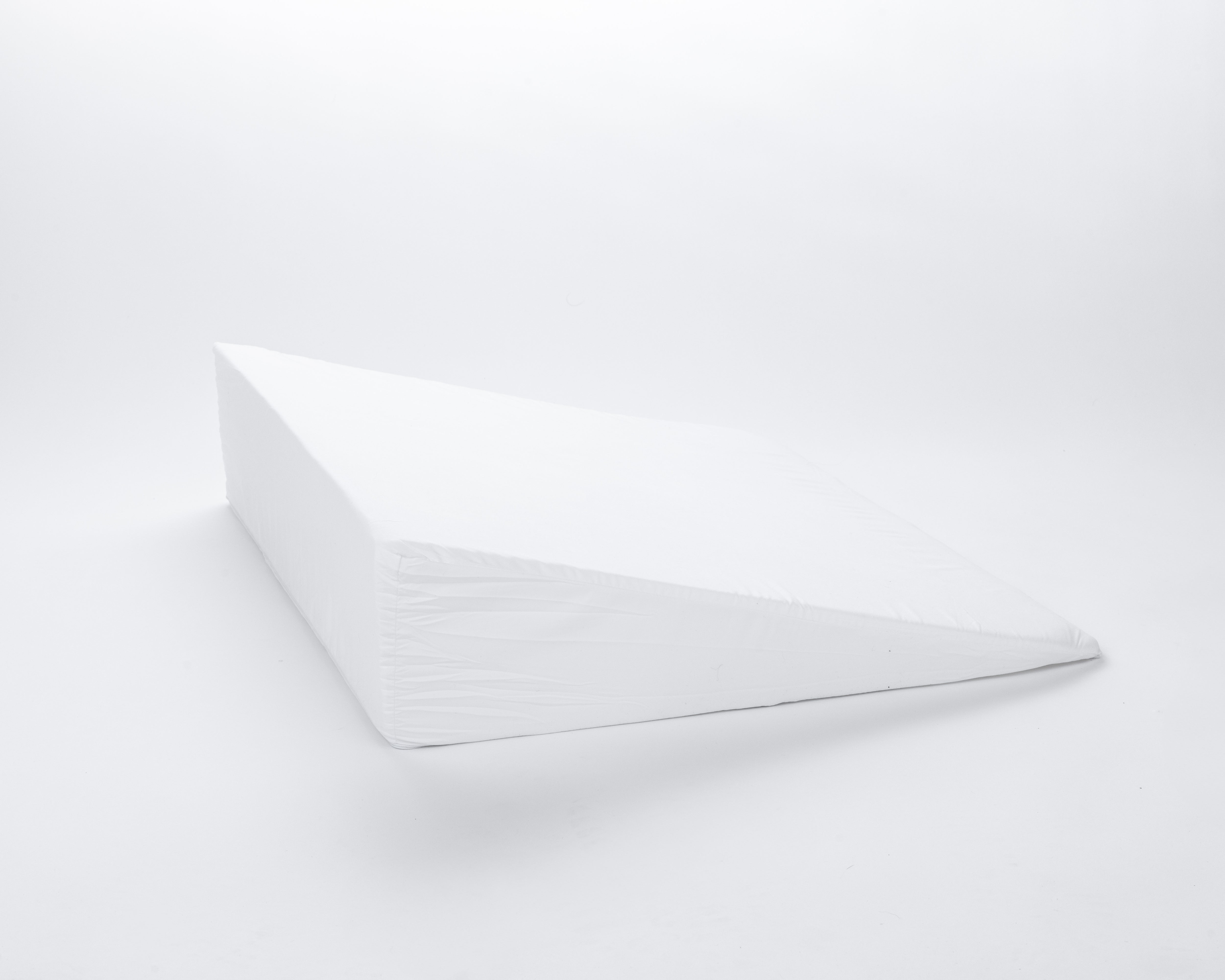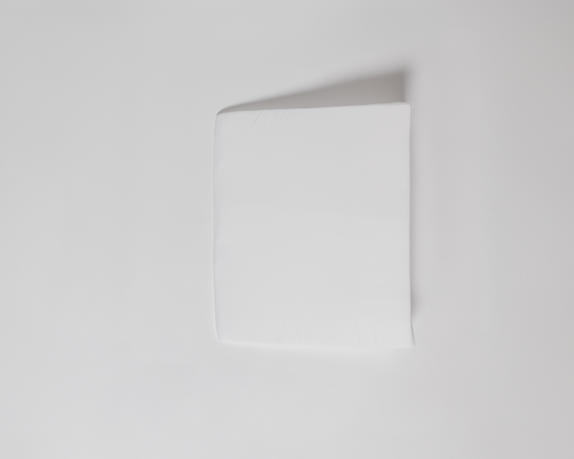Getting comfortable after lung surgery shouldn't feel like solving a Rubik's cube in the dark. Yet most patients find themselves lying awake, cycling through the same uncomfortable positions, wondering if they'll ever sleep normally again.
The reality is that lung surgery creates specific, predictable sleep challenges—and each one has a practical solution. Rather than giving you a long list of positions to try, this guide tackles the exact problems you're probably facing right now and shows you how the Sleep Again Pillow System solves them all.
Why Your Sleeping Position Matters More Than Ever
After lung surgery, your sleeping position becomes a critical factor in your recovery success. The position you choose for those crucial eight hours can either accelerate your healing or create unnecessary obstacles that slow your progress.
Three key reasons positioning is essential:
Optimized Blood Flow: Your incision site needs consistent circulation to deliver healing nutrients and remove waste products. Proper positioning ensures your cardiovascular system can work efficiently, while poor positioning can compress blood vessels and slow tissue repair.
Enhanced Breathing Mechanics: Lung surgery changes how your respiratory system functions. Certain positions maximize your lung capacity and oxygen exchange, while others can restrict expansion and compromise breathing efficiency—exactly what you want to avoid during recovery.
Superior Pain Management: The right position reduces pressure on sensitive areas and prevents muscle tension buildup. When your body isn't fighting an uncomfortable position all night, your pain medications work more effectively and you achieve the deep sleep phases crucial for healing.

Your 5 Biggest Sleep Problems (And How Sleep Again Pillows Solves Each One)
Problem #1: "I Can't Find Any Comfortable Position"
Why this happens: Your lungs now require support and protection that conflicts with every natural sleep position you've ever used.
The Sleep Again Pillows Solution: The Elevated Back Setup
Instead of lying flat and fighting your body's new needs, the Sleep Again Pillow System works with them. The system's Upper Body Wedge creates the optimal 30-45 degree elevation that most lung surgery patients find perfect, while the Head Pillow provides targeted support that ensures your cervical spine stays comfortable during extended periods of elevation.
Setup process:
-
Position the Upper Body Wedge to create a gentle, gradual incline
-
Add the Head Pillow for neck support without cranking your head forward
-
Place the Leg Support Wedge under your knees to prevent lower back strain
-
Let your arms rest comfortably at your sides with the included support pillows
Why elevated back sleeping works best: This position optimizes your lung mechanics by allowing both lungs to expand equally without compression. The elevation works with gravity to reduce fluid accumulation while distributing your body weight evenly to prevent pressure points.
Problem #2: "My Pillows Keep Shifting All Night"
Why this happens: Regular pillows compress under body weight and shift during normal sleep movement, leaving you without support by morning.
The Sleep Again Solution: Shape-Retention Technology
Regular household pillows lose 30-40% of their support by morning. The Sleep Again Pillow System maintains precision positioning throughout the night using advanced materials specifically designed for post-surgical recovery. Each component is engineered to complement the others, creating stability zones that lock your support system in place.
How it works:
-
Advanced materials that resist compression under body weight
-
Grip surfaces that prevent sliding on your mattress
-
Optional adjustable straps for added structural support
-
No more midnight pillow-fluffing sessions that interrupt your sleep cycles
Problem #3: "I Can't Breathe Well When Lying Down"
Why this happens: Lung surgery changes your respiratory mechanics, and certain positions can further restrict expansion when your lungs are already working harder.
The Sleep Again Solution: Precision Angle Design
When standard elevation isn't enough for comfortable breathing, the Sleep Again Pillow System offers the flexibility to create a semi-upright position. The Upper Body Wedge can be adjusted to create a steeper 45-60 degree incline that maximizes lung expansion while gravity assists in reducing fluid accumulation around the surgical site.
The breathing advantage:
-
Variable incline angles based on post-surgical respiratory needs
-
Graduated support that prevents straining your neck
-
Consistent elevation that doesn't collapse during the night
-
Particularly helpful during the first 1-2 weeks when breathing support is most critical
Problem #4: "I Keep Rolling Onto My Operated Side"
Why this happens: Your sleeping brain hasn't received the memo about your surgery. Unconscious movement during sleep puts pressure on your healing lung.
The Sleep Again Solution: The Integrated Barrier System
The Sleep Again Pillow System includes Two Contoured Side Pillows that function as comfortable barriers, preventing rolling while maintaining comfort. When you need to side sleep on your non-operated side, these same pillows provide precise support that cradles your back and prevents rolling onto the surgical site.
Barrier setup:
-
Contoured Side Pillowsare positioned to prevent rolling without feeling restrictive
-
Firm but comfortable resistance that guides your body into safe positions
-
No more waking up in positions that cause pain
Problem #5: "My Incision Hurts More at Night"
Why this happens: Pain often increases at night due to position changes, reduced distractions, and natural inflammatory cycles, plus poor positioning can put stress on healing tissues.
The Sleep Again Solution: Comprehensive Pain Prevention
The complete Sleep Again Pillow System eliminates pressure points through strategic weight distribution. The Upper Body Wedge reduces throbbing sensations through elevation, while the Contoured Side Pillows ensure zero weight-bearing on your operated side. Every component works together to support all body parts, preventing compensation tension.
Pain relief features:
-
Even weight distribution that eliminates pressure points
-
Elevation that reduces throbbing and swelling
-
Complete body support that prevents muscle tension buildup
-
Stable positioning that reduces the need for painful repositioning during the night

The Complete Sleep Again Pillow System: Your Recovery Command Center
Rather than trying to piece together individual pillows from different sources, the Sleep Again Pillow System offers a complete solution designed to work together seamlessly for post-surgical recovery. Understanding that lung surgery patients need support for multiple sleeping positions throughout their recovery journey, the system addresses every positioning challenge discussed above.
Every Sleep Again Pillow System includes:
Upper Body Wedge - Creates the optimal 30-45 degree incline for elevated back sleeping, eliminating the instability of stacked regular pillows. The gradual angle prevents neck strain while maximizing breathing benefits.
Two Contoured Side Pillows - Cradle your back and hips during side sleeping, providing the precise support needed when elevated back sleeping needs a break. Also function as barriers to prevent rolling onto your operated side.
Leg Support Wedge - Gently elevates your legs, maintaining proper spine alignment and reducing lower back pressure in any position. Essential for preventing compensation pain.
Head Pillow - Provides targeted head support and neck mobility, ensuring your cervical spine stays comfortable during extended periods of elevation without the forward head posture that causes neck pain.
Removable, Washable Slipcovers - Crucial for maintaining hygiene during recovery when you're spending more time in bed. Hypoallergenic materials prevent skin irritation, and chemical-free construction won't trigger medication-related sensitivities.
This comprehensive approach means you're not guessing about which individual pillows might work together or struggling to create stable support systems with mismatched pieces. The system particularly excels at supporting the elevated back sleeping position that's so crucial for lung surgery recovery, while providing the flexibility to transition to side sleeping when needed.
SHOP THE BEST PILLOW FOR LUNG SURGERY RECOVERY
Your Nightly Sleep Preparation Process
Follow this step-by-step routine to set yourself up for recovery success:
-
Take pain medication 30-45 minutes before your target bedtime
-
Gather essentials within arm's reach: water, tissues, phone, small flashlight
-
Set up your Sleep Again Pillow System before getting into bed - the stable design means one setup lasts all night
-
Perform gentle breathing exercises for 5-10 minutes to promote relaxation and lung function
-
Position yourself in your primary elevated back sleeping position using the Upper Body Wedge and Head Pillow
-
Practice progressive muscle relaxation starting from your toes and working upward
-
Engage in calming activities like reading, soft music, or guided imagery until you feel drowsy
This systematic approach helps ensure you're comfortable and positioned optimally before sleep takes over, reducing the need for painful repositioning during the night.
Positions to Avoid (And Why Your Body Will Thank You)
The Flat-Back Problem: While sleeping completely flat on your back might seem natural, it can actually work against your recovery. This position often restricts lung expansion, particularly if you're dealing with post-surgical swelling or fluid accumulation. Without the assistance of gravity to aid circulation, your heart works harder to pump blood effectively, potentially increasing swelling and slowing the healing process.
Stomach Sleeping: The Recovery Saboteur Stomach sleeping after lung surgery is typically off-limits—it places direct pressure on the incision site and severely restricts breathing capacity. Beyond the immediate discomfort, stomach sleeping forces your neck into an unnatural twisted position for hours at a time, often leading to neck and shoulder pain that compounds your surgical discomfort.
The Wrong-Side Side Sleep: Sleeping on your operated side too early in recovery can slow healing and increase discomfort significantly. The weight of your body pressing against the incision site can interfere with proper blood flow and put unnecessary stress on healing tissues. This position can also compress the lung on the operated side, reducing its ability to expand fully.

Creating Your Recovery Sleep Sanctuary
Your bedroom environment becomes crucial during recovery. Here are the key elements that optimize your Sleep Again Pillow System setup:
Temperature: Keep your room cooler than usual (65-68°F) to reduce inflammation and accommodate the extra support elements you'll be using.
Lighting: Install dimmer switches or keep a small bedside lamp handy for safe nighttime navigation without fully waking yourself up.
Mattress Considerations: If your mattress is very soft, the Sleep Again System's firm construction compensates by providing stable support zones. The system works on any mattress firmness level.
Nighttime Logistics: Keep essentials within reach—water, medications, tissues, and phone. A small flashlight helps with safe bathroom navigation without fully waking up.
The Art of Gradual Transition
Recovery isn't a switch that flips from "uncomfortable" to "normal" overnight. Your journey back to your preferred sleeping positions should be gradual and guided by how your body responds rather than an arbitrary timeline.
Most patients start with the elevated back position using the full Sleep Again Pillow System immediately after surgery, then gradually decrease the elevation over the first 2-3 weeks as comfort allows. The transition to side sleeping often happens around the same time, using the Contoured Side Pillows for support and barriers.
Listen to your body's signals during these transitions. Some discomfort is normal as you adjust to new positions, but sharp pain, increased swelling, or breathing difficulties are signs to return to a more conservative position and consult your healthcare team.
The timeline for returning to stomach sleeping—if you were a stomach sleeper before surgery—is typically the longest. Most surgeons recommend waiting at least 6-8 weeks, and some patients find they need to permanently modify this position or abandon it altogether.
Red Flags: When to Call Your Healthcare Team
While some discomfort and sleep disruption are normal parts of recovery, certain symptoms warrant immediate medical attention:
-
Sudden increases in pain that don't respond to your usual comfort measures
-
Breathing difficulties that worsen when lying down, especially if accompanied by chest pain
-
Signs of infection around the incision site—increased redness, warmth, swelling, or discharge
-
Persistent insomnia that doesn't improve with position adjustments and comfort measures
-
Swelling that increases significantly overnight or doesn't improve with elevation

Frequently Asked Questions
How long will I need to sleep in modified positions after lung surgery?
Most patients need to use modified sleeping positions for 4-6 weeks after surgery, though this varies based on the type of procedure and individual healing rates. The Sleep Again Pillow System adapts to your changing needs throughout recovery.
Can I use a recliner instead of trying to sleep in bed?
Many patients find recliners comfortable during the first week or two of recovery. However, most people sleep better in bed once they've established the Sleep Again Pillow System. The system provides more comprehensive support than most recliners.
What should I do if I wake up in a different position than I fell asleep in?
The Sleep Again Pillow System's barrier design significantly reduces unwanted movement during sleep. If you consistently wake up in positions that cause pain despite the barriers, discuss with your doctor whether additional positioning strategies might be helpful.
Is it normal to need more sleep than usual during recovery?
Yes, your body requires additional energy for healing, and many patients need 1-2 more hours of sleep per night during the first few weeks of recovery. The improved sleep quality from proper positioning often helps you get more restorative rest in the time you do sleep.
Are recovery pillows really worth the investment?
Quality recovery systems like the Sleep Again Pillow System typically pay for themselves in improved sleep quality and potentially faster recovery. Generic pillows often lose their shape, require constant readjustment, and may not provide the specific support angles needed for post-surgical healing.
Disclaimer
This information is provided for educational purposes only and should not replace professional medical advice. Every surgical procedure and recovery process is unique, and sleeping position recommendations may vary based on your specific surgery type, overall health, and individual circumstances. Always follow your surgeon's specific post-operative instructions regarding sleep positions and activity restrictions. If you experience unusual pain, breathing difficulties, or other concerning symptoms, contact your healthcare provider immediately.

